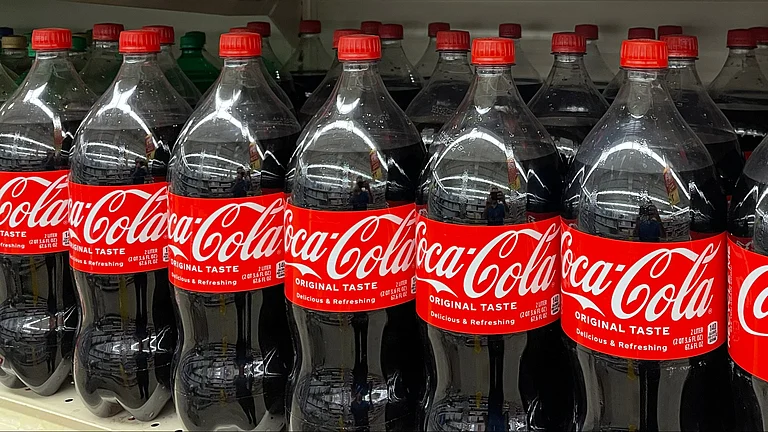World Environment Day 2025 arrives at a critical juncture in humanity’s environmental journey, with the theme “Ending Plastic Pollution” resonating louder than ever. Plastic pollution is a planetary crisis- over 400 million tonnes of plastic are produced each year, with more than 10 million tonnes leaking into our oceans annually. Microplastics now contaminate our food, water, and even the air we breathe. The world is united in its resolve to end this scourge. Yet, a less-explored narrative is emerging: the profound and often surprising intersection between plastic pollution and the renewable energy sector.
Plastics, during their early days, started off as a marvel of modern chemistry - lightweight, durable, and versatile. These very properties, however, have led to their ubiquity and persistence in the environment. The traditional linear economy —extract, produce, use, and discard —has turned plastics from a boon into a bane. Landfills overflow, rivers clog, and marine ecosystems are overwhelmed by the weight of plastic debris. But what if, instead of viewing plastic solely as waste, we reimagined it as a resource- a feedstock for the clean energy transition?
Plastics and Renewable Energy: An Unexpected Connection
At first glance, the renewable energy sector and plastic pollution seem to occupy separate spheres. Yet, plastics are deeply woven into the fabric of renewable energy infrastructure. Solar panels, wind turbine blades, battery casings, and electrical insulation all rely on advanced polymers. The International Energy Agency (IEA) estimates that the global solar industry alone uses tens of thousands of tonnes of plastic annually for encapsulants, back sheets, and mounting systems. With blades often exceeding 80 meters, wind turbines are constructed from composite materials rich in plastics and resins.
This reliance is not inherently problematic- plastics in renewables offer durability, corrosion resistance, and lightweight performance, all of which enhance energy efficiency and reduce lifecycle emissions. The challenge arises at end-of-life: how do we manage the growing mountain of plastic-based renewable infrastructure, and how can we ensure that today’s solutions do not become tomorrow’s waste?
From Pollution to Power: Transforming Plastic Waste into Clean Energy
The answer may lie in the very heart of the renewable energy revolution: innovation. Around the world, researchers and entrepreneurs are pioneering ways to convert plastic waste into valuable energy resources, closing the loop on both plastic and carbon.
One of the most exciting breakthroughs is the conversion of plastic waste into hydrogen fuel. Plastic, derived from hydrocarbons, contains significant latent energy. Through advanced pyrolysis or gasification, plastics can be broken down at high temperatures in the absence of oxygen, releasing hydrogen-rich gases. This hydrogen can then be purified and used to power fuel cells, generate electricity, or serve as a clean industrial feedstock.
A notable example is the work at the University of Chester in the UK, where scientists have developed a process to convert mixed, contaminated plastics into hydrogen and electricity, leaving only inert residues behind. This approach not only diverts plastics from landfills and incinerators but also provides a low-carbon alternative to fossil-derived hydrogen, which currently accounts for over 95% of global hydrogen production.
Traditional waste-to-energy (WTE) plants have long incinerated plastics to generate electricity but at the cost of air pollution and greenhouse gas emissions. Newer, cleaner technologies are emerging. Pyrolysis and gasification, for example, can convert plastics into syngas—a mixture of hydrogen and carbon monoxide- which can be used to generate electricity, produce synthetic fuels, or even create new plastics. These processes operate in controlled, oxygen-limited environments, minimising toxic emissions and maximising energy recovery.
Singaporean scientists have recently demonstrated solar-powered reactors that convert plastic waste and greenhouse gases into syngas and glycolic acid, using sunlight as the primary energy input. Such innovations not only address plastic pollution but also harness renewable energy to drive the transformation.
Closing the Loop: Recycled Plastics in Renewable Infrastructure
The circular economy vision extends beyond energy recovery. Researchers are now developing solar panels and battery components made from recycled plastics. For instance, solar modules using recycled PET (from plastic bottles) as back sheets are being tested for durability and efficiency, offering a double dividend: reducing plastic waste and lowering the carbon footprint of solar manufacturing.
Similarly, engineers have upcycled PET plastics into porous carbon nanostructures for use in super capacitors —energy storage devices that charge rapidly and could revolutionise grid-scale storage and electric vehicles. These innovations not only reduce reliance on virgin materials but also keep plastics circulating within the economy rather than polluting the environment.
Ending plastic pollution requires more than technological fixes- it demands systemic change. Policy frameworks must incentivise the collection and sorting of plastic waste, support research into advanced recycling and plastic-to-energy technologies, and enforce extended producer responsibility for renewable energy products. Industry and governments must collaborate to ensure that renewable infrastructure is designed for disassembly, recycling, and minimal environmental impact.
Public awareness and participation are equally vital. Communities can play a role by segregating plastic waste, supporting local recycling initiatives, and advocating for sustainable product design. Education campaigns can highlight the hidden connections between plastic waste and clean energy, inspiring a new generation of innovators to tackle both challenges together.
World Environment Day 2025’s call to end plastic pollution is not just an environmental imperative- it is an invitation to reimagine the relationship between materials and energy. By harnessing the latent energy in plastic waste, integrating recycled plastics into renewable infrastructure, and embracing circular economy principles, the renewable energy sector can transform a global crisis into a powerful opportunity. The path forward is clear: with creativity, collaboration, and commitment, we can end plastic pollution and accelerate the clean energy transition- securing a healthier, more sustainable future for all.
(The author is the Chief Sustainability Officer at Waaree Energies Limited.)


























